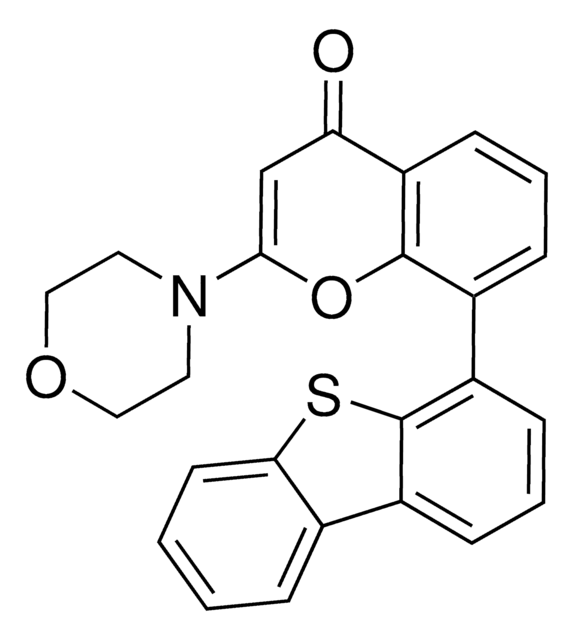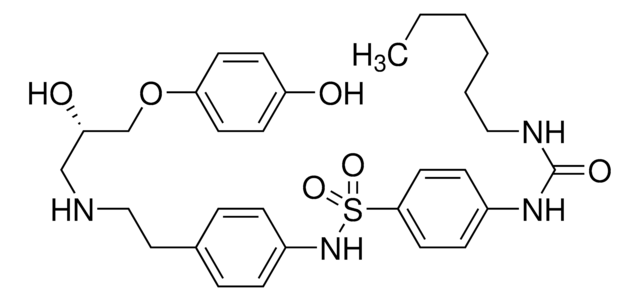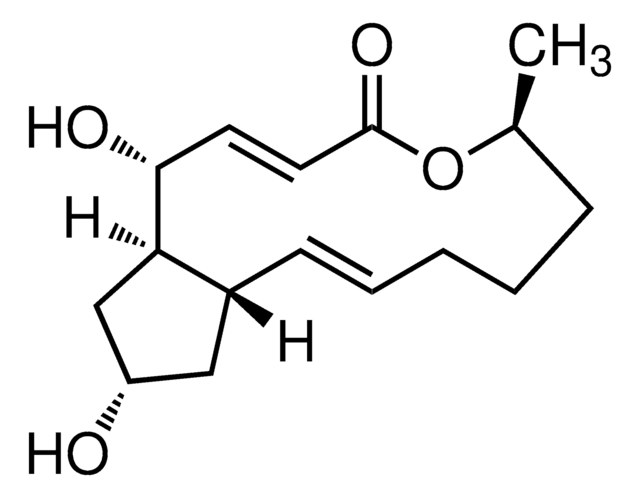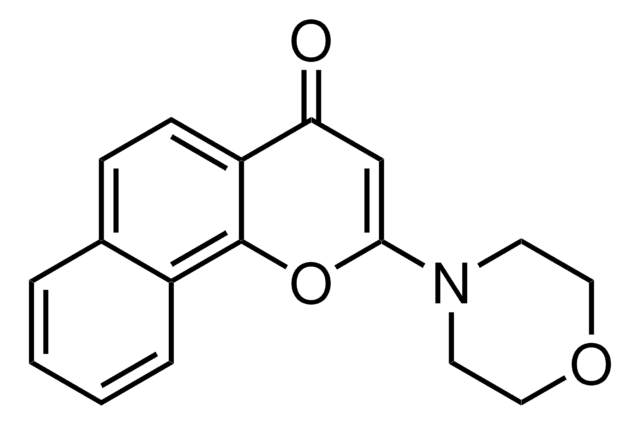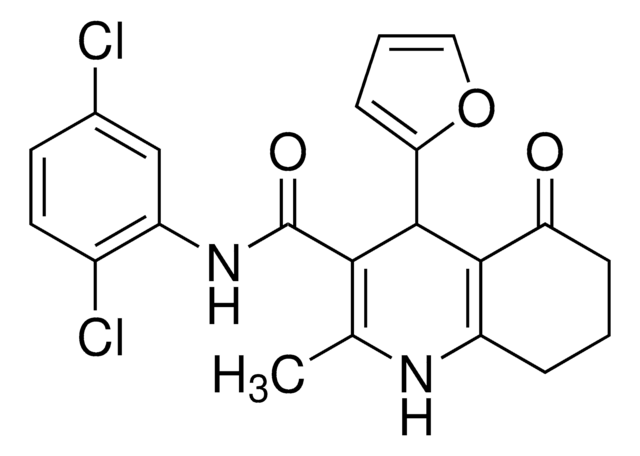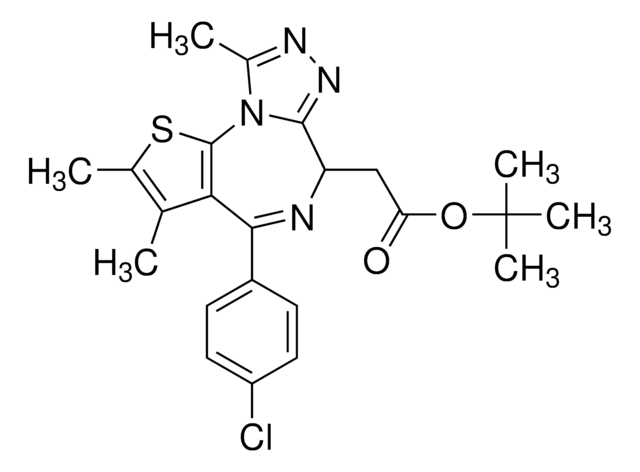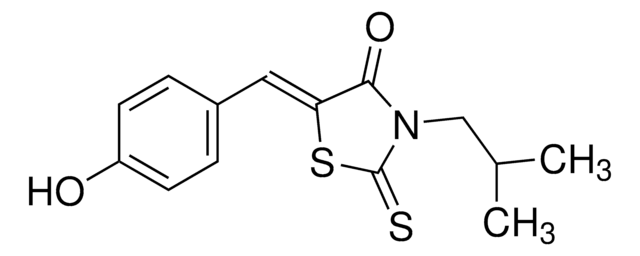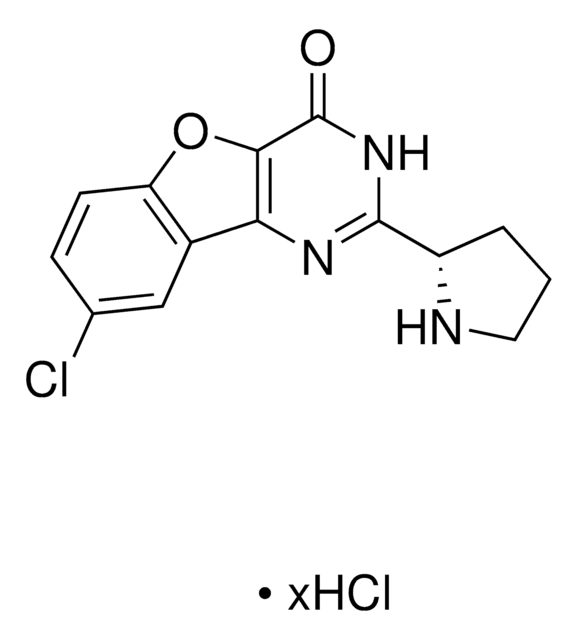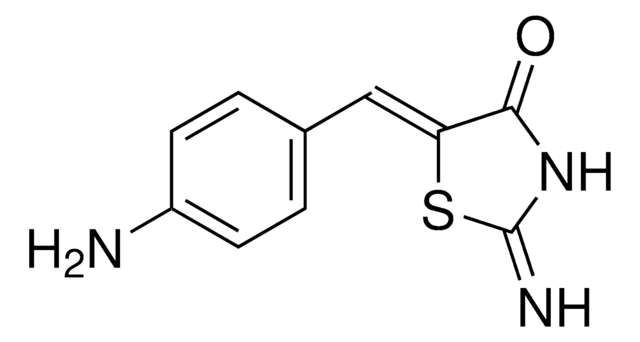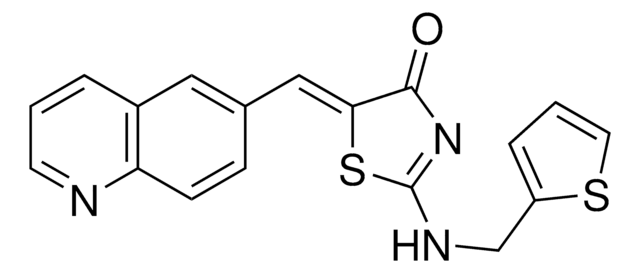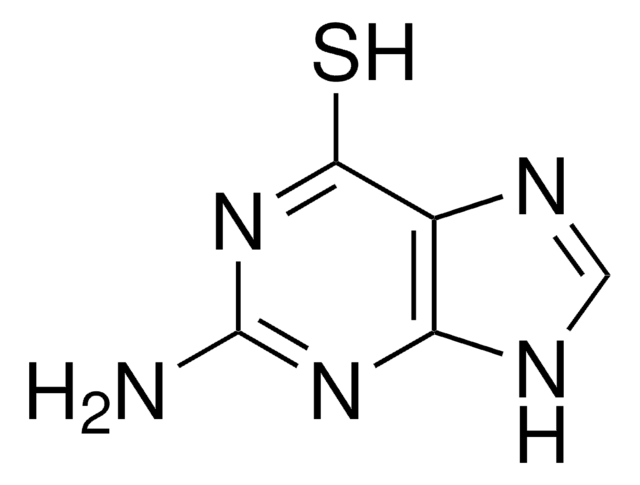SML1546
SCR7 pyrazine
≥98% (HPLC)
Sinônimo(s):
2,3-Dihydro-6,7-diphenyl-2-thioxo-4(1H)-pteridinone, 6,7-Diphenyl-2-thio-lumazine (8CI)
About This Item
Produtos recomendados
Nível de qualidade
Ensaio
≥98% (HPLC)
Formulário
powder
cor
faintly yellow to dark yellow
solubilidade
DMSO: 10 mg/mL, clear
temperatura de armazenamento
room temp
cadeia de caracteres SMILES
O=C(C1=C(N2)N=C(C3=CC=CC=C3)C(C4=CC=CC=C4)=N1)NC2=S
InChI
1S/C18H12N4OS/c23-17-15-16(21-18(24)22-17)20-14(12-9-5-2-6-10-12)13(19-15)11-7-3-1-4-8-11/h1-10H,(H2,20,21,22,23,24)
chave InChI
GSRTWXVBHGOUBU-UHFFFAOYSA-N
Descrição geral
Aplicação
Ações bioquímicas/fisiológicas
Palavra indicadora
Warning
Frases de perigo
Declarações de precaução
Classificações de perigo
Acute Tox. 4 Oral
Código de classe de armazenamento
11 - Combustible Solids
Classe de risco de água (WGK)
WGK 3
Ponto de fulgor (°F)
Not applicable
Ponto de fulgor (°C)
Not applicable
Escolha uma das versões mais recentes:
Certificados de análise (COA)
Não está vendo a versão correta?
Se precisar de uma versão específica, você pode procurar um certificado específico pelo número do lote ou da remessa.
Já possui este produto?
Encontre a documentação dos produtos que você adquiriu recentemente na biblioteca de documentos.
Os clientes também visualizaram
Nossa equipe de cientistas tem experiência em todas as áreas de pesquisa, incluindo Life Sciences, ciência de materiais, síntese química, cromatografia, química analítica e muitas outras.
Entre em contato com a assistência técnica

